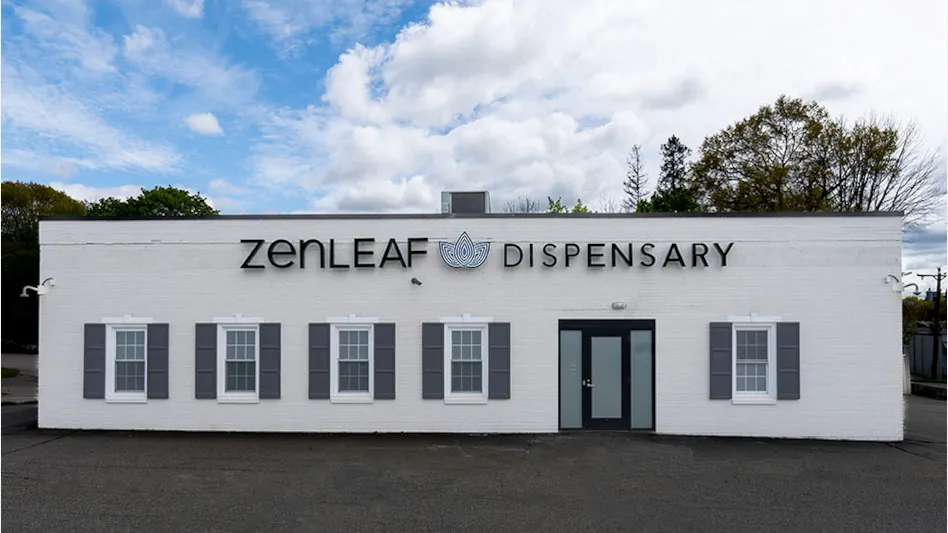
Las Vegas Event Photography
A dispensary’s design is often a cannabis company’s first impression on the public—and therefore should be impressive.
A well-thought-out design not only attracts patients and customers to the store, but it can also evoke emotions, engage and direct shoppers through product offerings, facilitate expedited customer service, and even increase sales.
At Cannabis Conference 2022, Sumer Thomas, director of regulatory operations at Canna Advisors, moderated a panel with Wendy Bronfein, chief brand officer and director of public policy at Curio Wellness; Amanda Ruge, co-founder of Flowspace Design; and Virginia Maggiore, principal of Retail Design Collaborative (RDC), where the speakers shared insights and strategies for retail buildout.
Here are some of their key do’s and don’ts to design a dispensary for optimal customer experience, from the license application and conditional license approvals to the actual buildout and launch of retail operations.
DO: Have a plan—but be flexible.
Thomas pointed out that each state’s cannabis regulations will outline a process for launching a dispensary that will likely take several months or up to a year to complete.
“One of the troubles with the cannabis industry is there are a lot of variables and a lot of things that can happen, things that can throw your plans and your timelines off course,” she said. “So, one thing to keep in mind is to be flexible about all of these.”
The actual buildout of the dispensary, in particular, should be flexible, Ruge said, as it can often take longer than initially anticipated.
To stay on track and meet deadlines, Maggiore said operators should tackle multiple steps of the licensing and buildout processes at once—even completing steps out of sequence—to keep things moving.
“While you’re waiting for your license application, you could go, at risk, with plans for your buildout,” she said. “You’ll be paying an architect or an engineer and that’s the risk that you assume. It’s not mega money, but it is some money that if you don’t get the license, you will have invested for no reason, unfortunately.”
After submitting the license application, dispensary operators should at least start ordering materials for the buildout, Maggiore said, as there will likely be lag time in receiving the orders.
“[With] certain items, you need to take stock of … the cadence of items you need and how [to] prioritize them relative to their lead time, making sure that they’re in,” Bronfein said. “Having your building ready and not having anywhere to put your POS stations and run sales—that’s a problem. But if there’s a random chair that’s late, that’s not going to be such a big deal.”
DO: Take compliance seriously.
Compliance should be top priority for any cannabis business, and dispensaries are no exception.
Bronfein said that retail operators should communicate with regulators throughout the entire licensing and buildout process.
“Another thing that’s super important is no matter what pitfalls may occur, [you need to be] very forthcoming with your regulators,” she said. “You live and die by the regulators, and so just being very open and transparent and forthcoming [is important]. When you find out something is going to be delayed, let them know right away. Having that information up front is going to be more beneficial to you than you trying to figure it out behind the scenes and then coming in late and saying, ‘We’re not making it because of X, Y and Z.’”
Operators should also ensure that everything in the buildout aligns with the details in their license applications, Ruge said.
“Make sure that moving forward, everything that you’re designing is aligned with your application so that everything you put on your application is true to what you are designing,” she said. “Even having the application writer’s input [when designing the space] is pretty important, as well.”
Any contractors working on the project should know what security measures need to be in place, from POS systems to vaults, Maggiore said.
Regulators tend to have a lot of rules around vaults due to concerns about product diversion, Bronfein said, and it can be expensive to build.
“The vault can be a very expensive part of the build because they basically want you to have an interior fortress within your building,” she said. “Because of that, it’s probably important to evaluate what you think the demand and the growth in your market will be because you don’t want to have to re-build your vault if you build it too small, and you don’t want to waste too much money making it too big. But that is going to be a place where, as much as you’d like to spend on the front to make it beautiful and create a brand experience, you’re going to have a big expense from just building that vault and securing it.”
DO: Perform due diligence on your location.
Some state regulations only allow dispensaries to set up shop in buildings or areas that are designed for retail, Maggiore said, so it is important to understand these rules up front and to have experts evaluate the space before a lease is signed to avoid costly upgrades later.
“I would take the time to do the due diligence and get the right team involved to do that ahead of time,” Maggiore said.
The right team includes the dispensary owner, Ruge said, as well as the vice president of operations or operations manager, the person in charge of the company’s financials, and the designer or architect.
“I also think it’s important to have a connection to the community, specifically from a zoning standpoint, but … if anybody has any issues with you being in that area, [make sure] you’re listening to it and understanding what those concerns are and figuring out what you need to do to alleviate those concerns,” she said.
Bronfein recommended locating in the area of town where all other retailers are located for maximum traffic.
“Everyone lives somewhere where there’s a main drag of retail, and that’s basically where you want to start,” she said. “You want to be in the best high-traffic area with good visibility in a high-volume retail area with lots of cars driving by. You want to consider the median household income of where you are relative to the spending power of the audience.”
Bronfein also stressed the importance of considering what kind of health care services and providers are nearby in a medical market to help funnel patients to the dispensary.
Dispensary operators should also pay attention to state regulations on how close cannabis retailers can be from schools, day cares and churches, Ruge said.
“That’s the No. 1 thing, is you have to make sure that you can be there,” she said.
Ruge said that ample parking is also important when selecting a location, and when parking is less available, operators should select areas with accessible public transportation or a location on a main street that is accessible by foot traffic.
Points of entry are also important, Ruge said.
“It’s always important to have an entrance for your vendors and then an entrance for your customers or patients,” she said. “Having both of those come in the same entrance can be a huge security risk.”
DO: Think critically about shipping and receiving.
Ruge said it is important to ensure the dispensary has the space to receive product and ship product out, as well as room for a quarantine cabinet to potentially store recalled product that will need to be separated out.
“I can’t tell you how many times I’ve toured dispensaries and they’re receiving all their product in the main hallway in the back of house,” she said. “Having enough space will make your employees happy. And then, in addition to that, after you receive that product, where are you going to put it? How is it going to stay secure? Hopefully, you have a high-volume space and product coming in and leaving same day. Don’t underestimate how much space you need for storage and receiving.”
DO: Consider how customers see and receive product.
Dispensary operators should consider the flow of customers in the store, Maggiore said, including how they enter and how they see the company’s product offerings.
“How are they seeing your product? Are they seeing it all in one moment? Are they going through multiple case lengths to see all of your product? Where does your transaction happen?” Maggiore asked, to provide examples.
Retailers should also think about how their products flow from one point to another, she said.
“How’s your product getting from the back to the front, where the transaction’s happening?” Maggiore asked. “Is it having to go through three different doors? Is it a pass-through window, which makes it a little easier? Think about that when you’re looking at the floor plan, too, because from the top down, a floor plan might work, but then you start putting all these lines of how everything’s flowing and then you realize they’re all crossing over each other, and then you’ve got issues.”
Wayfinding is also critical, Maggiore said. This includes signage to label the dispensary’s product offerings and allow customers to self-guide themselves through the store to some extent.
“Of course, your staff is your No. 1 resource, but it builds a familiarity so that when they come back, they’ll know, ‘Oh, there’s the sativa section and that’s where I go because that was the product that so-and-so recommended to me, and now I found it and I like it,’” she said.
Bronfein said retailers should have a general vision of how they want to communicate product categories to customers, and vendors can often help by providing table tents, social media assets and email materials to market their products.
“There’s going to be a lot of people who don’t know things and you want them to understand all the variety of dosage forms that are available,” Bronfein said. “What’s their onset? What’s their duration? Why would you pick one versus the other? A lot of the brands that you may sell will give you collateral, and you should take advantage of that.”
While visual aids are important, Maggiore said retailers should aim to appeal to all five senses to help customers navigate product options.
“It goes beyond visual aids,” she said. “With brick-and-mortar, you can appeal to all five senses. Think about that. They can look online and see pictures of things, or they can see a printout of something, but how are you appealing to their other senses? What are the textures and smells and sounds that they’re giving off in your space?”
Ruge also stressed the importance of employee education to help customers make buying decisions.
“Employee education is incredibly important, and I think underutilized right now,” she said. “It is way more than the percentage of the THC. It is more than indica versus sativa. What are the terpenes? What are the cannabinoids? How is this going to affect me specifically? Everybody’s body is different and what affects me affects you differently, but what’s the general consensus? Do you like it? Have you gotten feedback from customers? Why am I buying this product?”
Seasonality can also play a role in helping customers decide what to buy; Bronfein said retailers can play off the holiday season, the 4/20 and 7/10 industry holidays, awareness months, or even different seasons—like summer versus winter—to create customer engagement and events.
DON’T: Overlook curb appeal.
Put simply: “You need curb appeal,” Bronfein said.
For example, the Curio Wellness team found a space with glass windows in the front that allows customers to see inside and, in turn, makes them feel more comfortable entering the store.
“It’s comfortable for grandma and soccer moms,” Bronfein said.
DON’T: Intimidate customers with security measures.
While security is a necessary component of any dispensary, the panelists stressed the importance of making it approachable.
“You have to have security, but I think if it feels very natural from a retail perspective, that’s more accessible for everyone,” Bronfein said.
Something to avoid, for example, would be armed guards stationed at the front entrance.
To integrate security measures in a more natural way, Ruge recommended ensuring that the sales floor has no blind spots—that there are no walls cutting the budtenders off from a view of the entire room.
The lobby is another area where security should be more subtly placed, Maggiore said, as it is often the customer’s first impression of the brand.
“What’s that experience like?” she asked. “Is there an armed guard behind glass or is there a person at a desk with a smiling face checking [the customers] in and asking them what they’re here for today?”
The latter experience, Maggiore said, helps build the brand relationship and makes customers want to come back.
DON’T: Underestimate planograms.
Planograms—essentially visual aids that show employees where incoming product goes on the sales floor—are “really helpful,” Ruge said.
Planograms can be created by marketing firms, she said, or there is also software available to help retailers determine the best place to put certain products in the store.
“[A planogram] also keeps product a bit more organized,” Ruge said. “If you’ve been in an older dispensary, you may have seen floor-to-ceiling pegboard walls, and that can get very confusing. You don’t know if you’re looking at edibles. You don’t know if you’re looking at vapes. So, the planograms are a great merchandising tool.”
DON’T: Sacrifice branding for compliance.
Compliance is, of course, critical for cannabis businesses, but Bronfein said retailers should aim to build a store that’s compliant with state regulations but that also showcases the company’s branding and brand messaging.
“I am being compliant and doing what you’re saying, but I’m filtering it through how we do stuff here,” she said.
For example, Ruge said that many states prohibit a true deli-style model—which often also poses security risks for the dispensary—but there are ways to lean into this model without truly serving flower from containers on a counter.
“Depending on how you have your dispensary set up, if it’s set up how you’ve seen from the beginning where it’s a deli-style counter, there may be boxes of product on top of that counter, but they are display only,” Ruge said. “They are not infused. There’s nothing inside of it, which a lot of times does come down to regulations. That’s also just a security risk—someone could easily swipe that, but if there’s nothing in it, then there’s nothing for you to worry about.”
Join us this year at the Paris Las Vegas Hotel & Casino for Cannabis Conference, the leading education and expo event for plant-touching businesses.
Latest from Cannabis Business Times
- South Dakota Group Submits 29K Signatures for 2024 Adult-Use Cannabis Legalization Measure
- Rescheduling Would Have Saved Verano $80M in 2023 Tax Payments, CEO Says
- Aurora Marks 1st Medical Cannabis Shipment to New Zealand Market
- Where All 100 US Senators Stand on SAFER Banking Act
- Blumenauer Unveils Legislative Blueprint, Additional Administrative Action Needed Following Rescheduling
- Cannabis Rescheduling FAQ: What Now?
- From Custodian to Cultivation Supervisor
- California City in Cannabis Retail Desert Welcomes 1st Dispensary





